There are 650 bird species in North America, but only three are bluebirds.
Eastern bluebirds live east of the Rocky Mountains. During the summer season, they’ll venture as far North as Southern Quebec, Ontario, and Manitoba to nest. These songbirds love wintering in the Southeastern and South Central United States. You’ll also find bluebirds in Guatemala, Northern Honduras, and the pinelands of Nicaragua.

If you ever get a chance to see an Eastern bluebird, you’ll notice that they have a stunning cobalt blue plumage on their head, back, wings, and tail. What else should you know about these delightful creatures?
Read on to learn 10 incredible facts about eastern bluebirds.
1. Female Eastern Bluebirds Only Have One Ovary
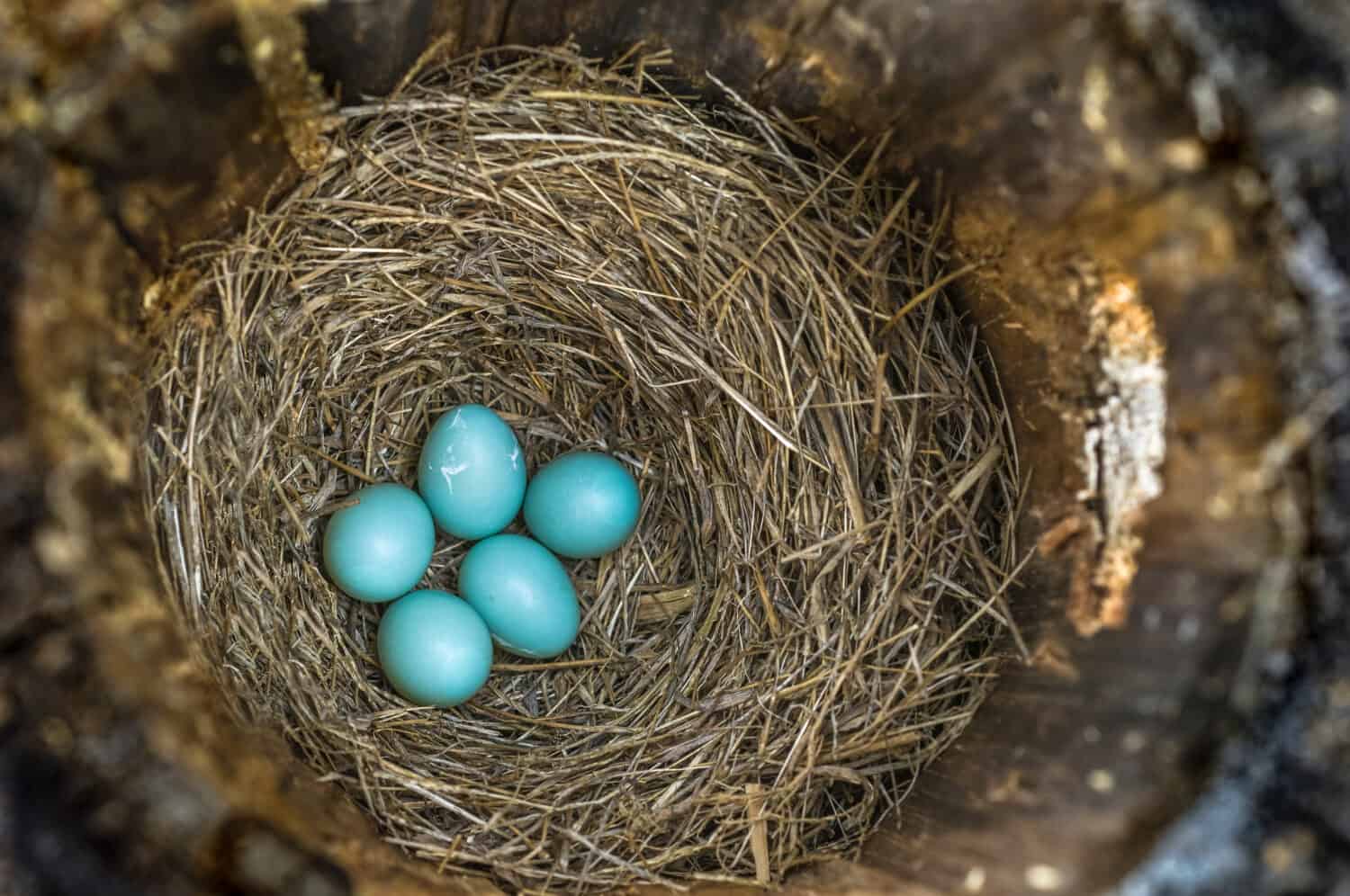
Even though female eastern bluebirds have only one ovary – they can still produce 3 – 5 eggs.
Image: Alan B. Schroeder, Shutterstock
©Alan B. Schroeder/Shutterstock.com
While many birds have two ovaries, the female eastern bluebird only has one. Female bluebirds only have a left ovary. This helps reduce their weight so that they can fly better. Even though they only have one ovary, yearling eastern bluebirds can produce 3-4 eggs. Once they’re older, females can average 5 eggs in the first nest of the season.
2. Baby Eastern Bluebirds Have an Egg Tooth
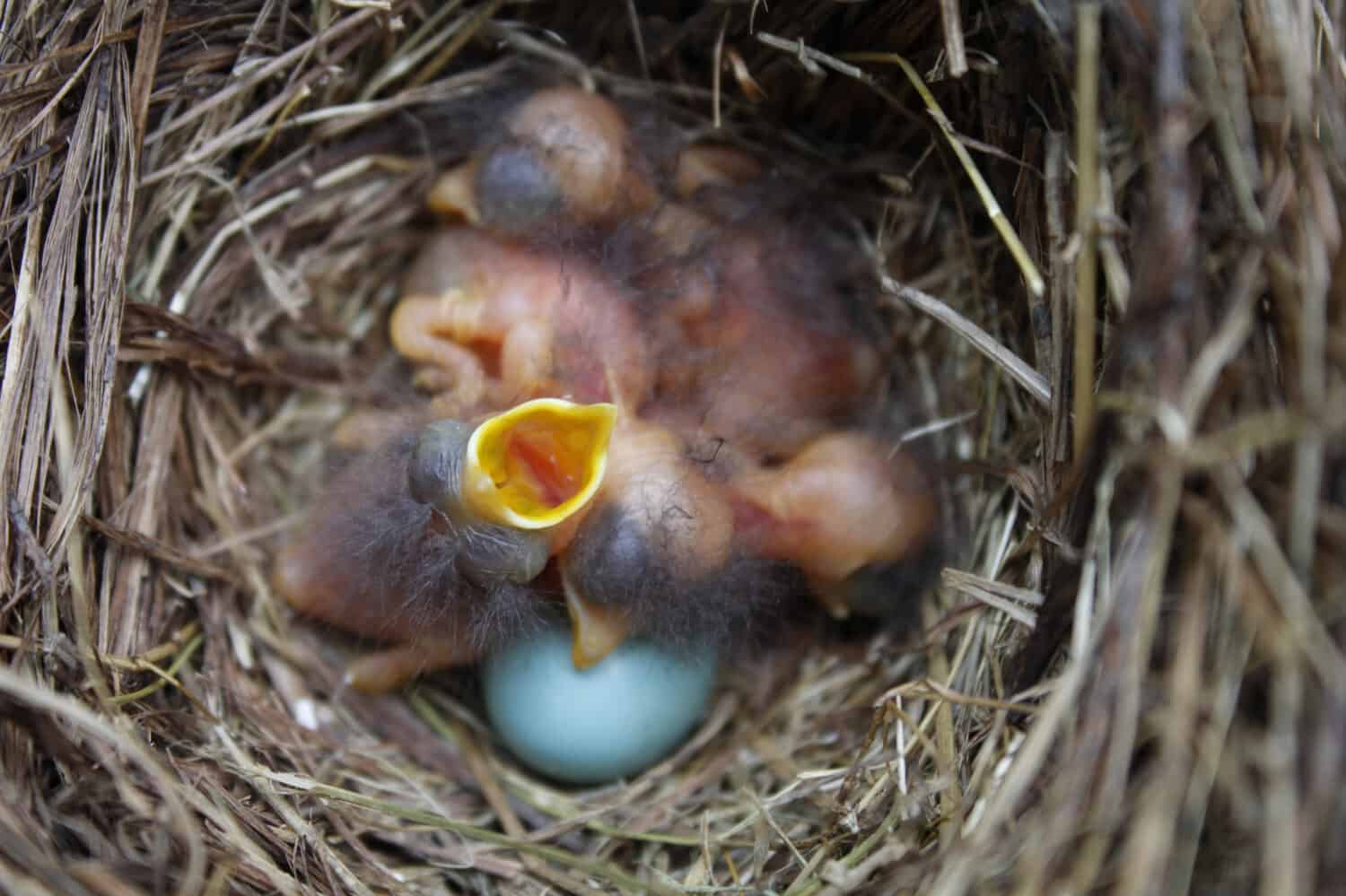
Baby bluebirds have a sharp egg tooth at the end of their beaks.
Image: Isaiah N Lilly, Shutterstock
©Isaiah N Lilly/Shutterstock.com
How do baby bluebirds break free from their shells? When an eastern baby bluebird is ready to enter the world, it’ll get pecking on the middle of its shell with an egg tooth. The egg tooth is a hard tip at the end of its beak. Once they break free of their shell, the egg tooth falls off. It usually takes several hours of work for a hatchling to break free. Once they emerge, hatchlings are wet and exhausted! Immediately, their mother will feed the shell parts to fuel them with calcium.
3. They’re a Perching Bird
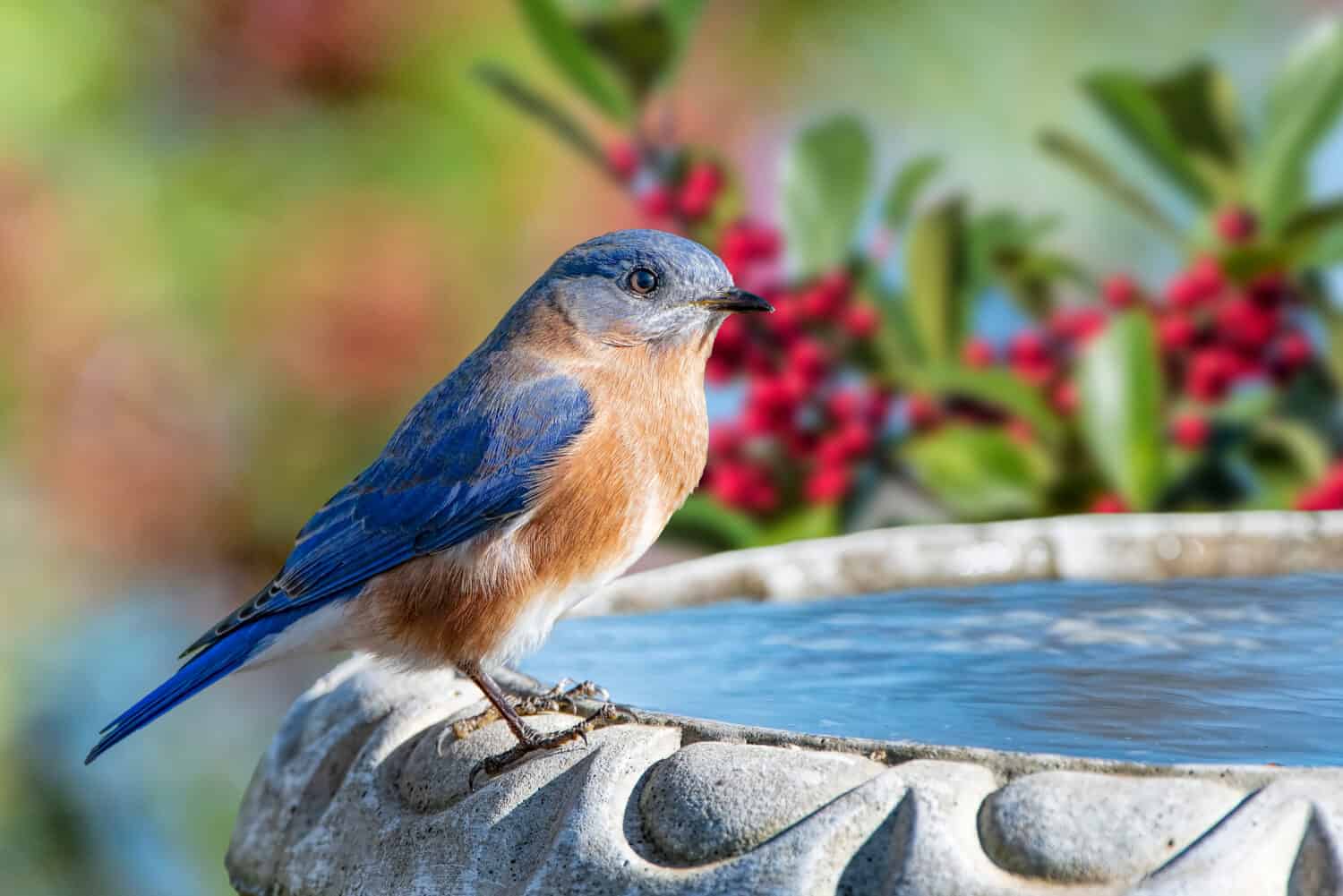
Perching birds like the eastern bluebird are perfectly balanced on their feet.
Image: Bonnie Taylor Barry, Shutterstock
©Bonnie Taylor Barry/Shutterstock.com
Eastern bluebirds belong to the order of perching birds (Passeriformes). Perching birds are a large group and make up over half of the world’s bird species. One of their distinct features is that perching birds have a well-developed voice box. That’s one of the reasons eastern bluebirds are such great singers! Their small compact form is also perfectly balanced, so their center of gravity is over their legs and feet when they perch.
4. Baby Eastern Bluebirds Are Smaller Than Your Thumb
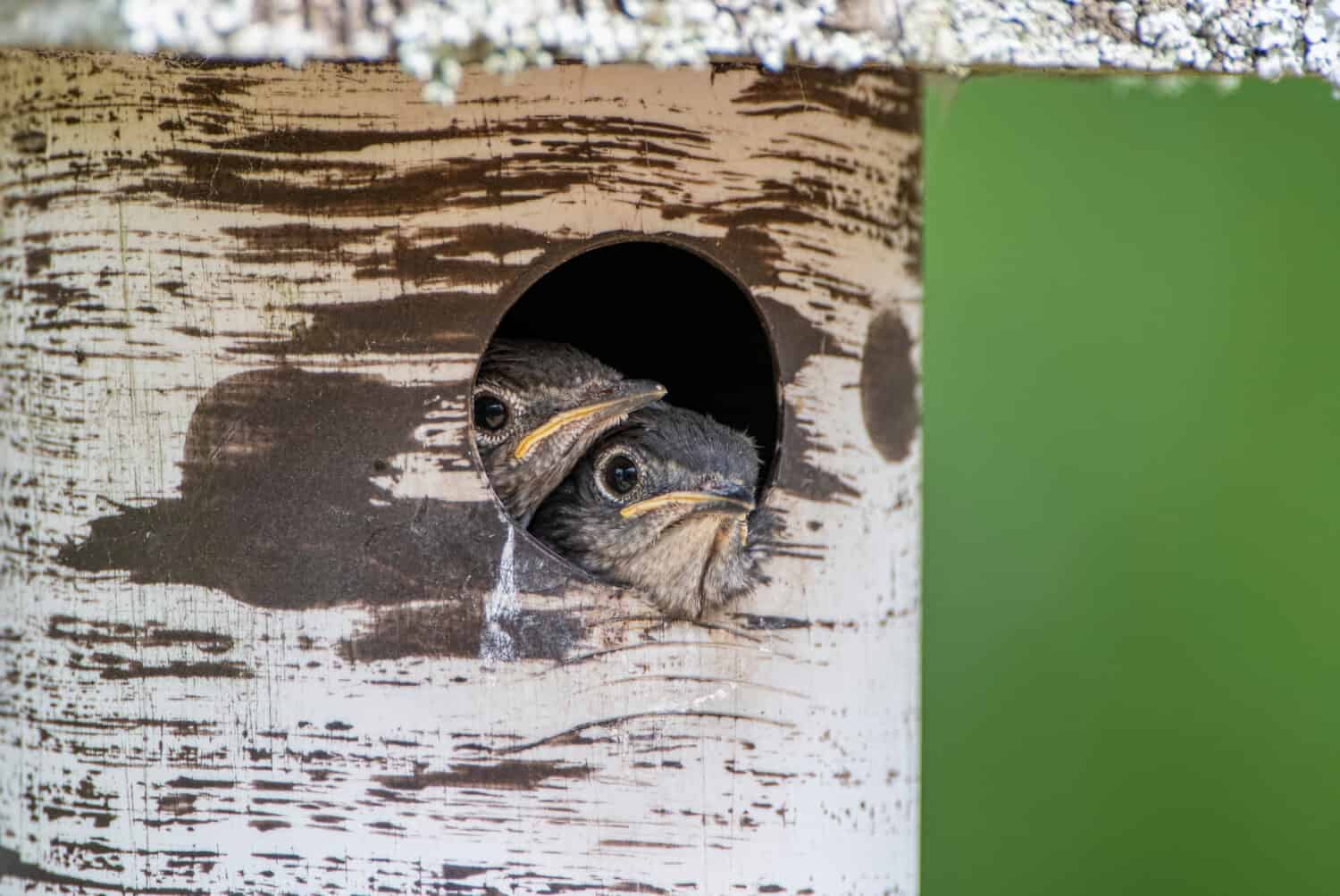
Baby bluebirds are totally dependent on their mothers.
Image: Bonnie Taylor Barry, Shutterstock
©Bonnie Taylor Barry/Shutterstock.com
When they hatch, eastern baby bluebirds only weigh 28 g or 1 oz. That’s the same weight as a first-class letter. They’re so small, they’re the size of the end of a human thumb. Their heads are usually the most significant part of their body, and their eyes take a while to develop. Baby bluebirds will have naked nubbins for wings and newly weak legs. Their bellies are swollen with the remains of the yolk from the egg, and they have salmon-colored skin.
5. Bluebird Trails Can Be Tracked for Decades
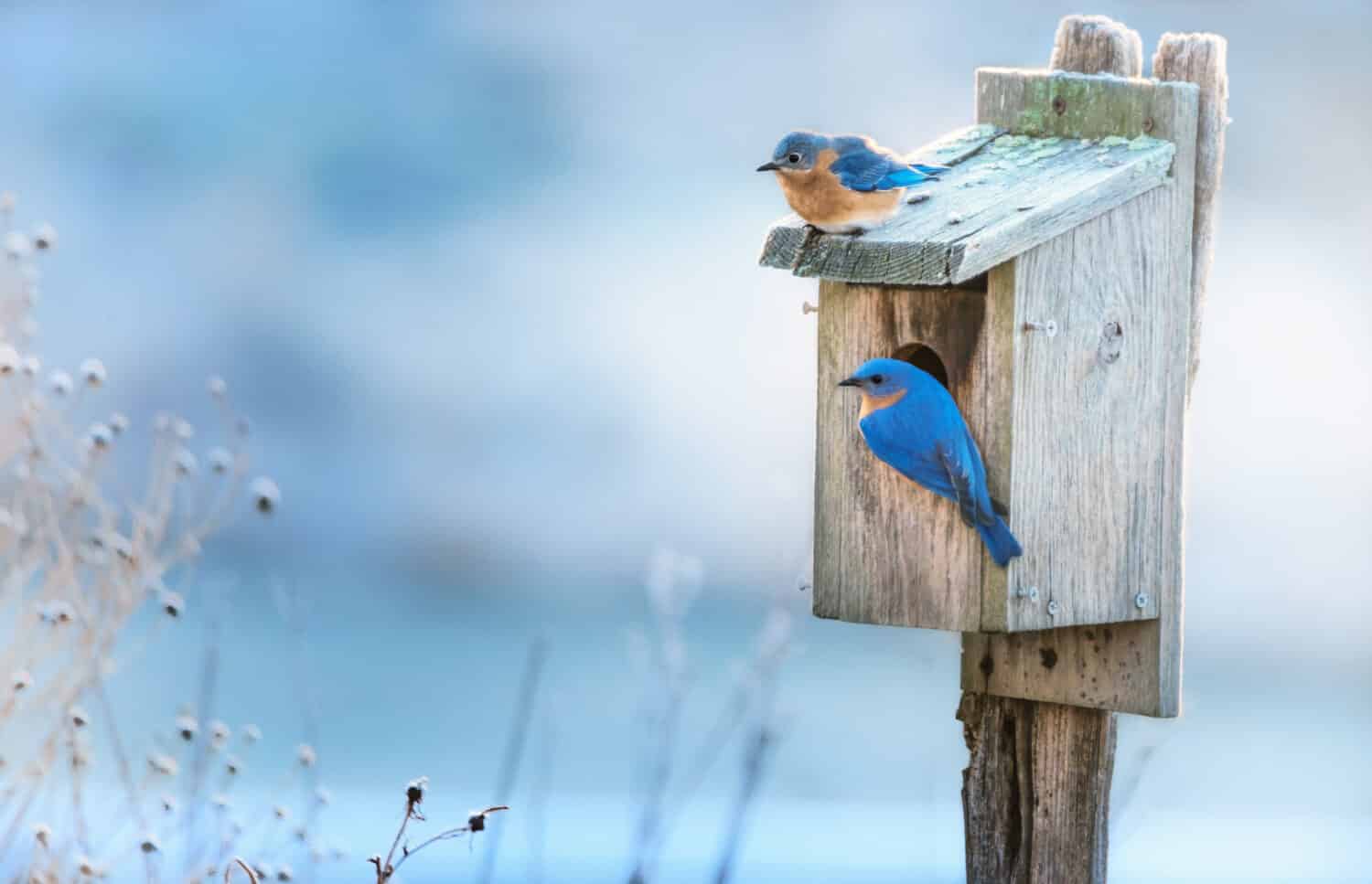
Blue-birders learn how to make perfect homes for eastern bluebirds and where to put them.
Image: Heather L. Hubbard, Shutterstock
©Heather L. Hubbard/Shutterstock.com
When somebody is an avid bluebird, they might keep track of bluebird trails for decades! Blue-birding is the hobby of learning about, watching, and building houses for eastern bluebirds. Putting out nest boxes is one of the easiest ways to study these incredible creatures. All it takes is one or two active bluebird boxes to have an exciting time during the nesting season.
6. Bluebird Couples Are Secretive
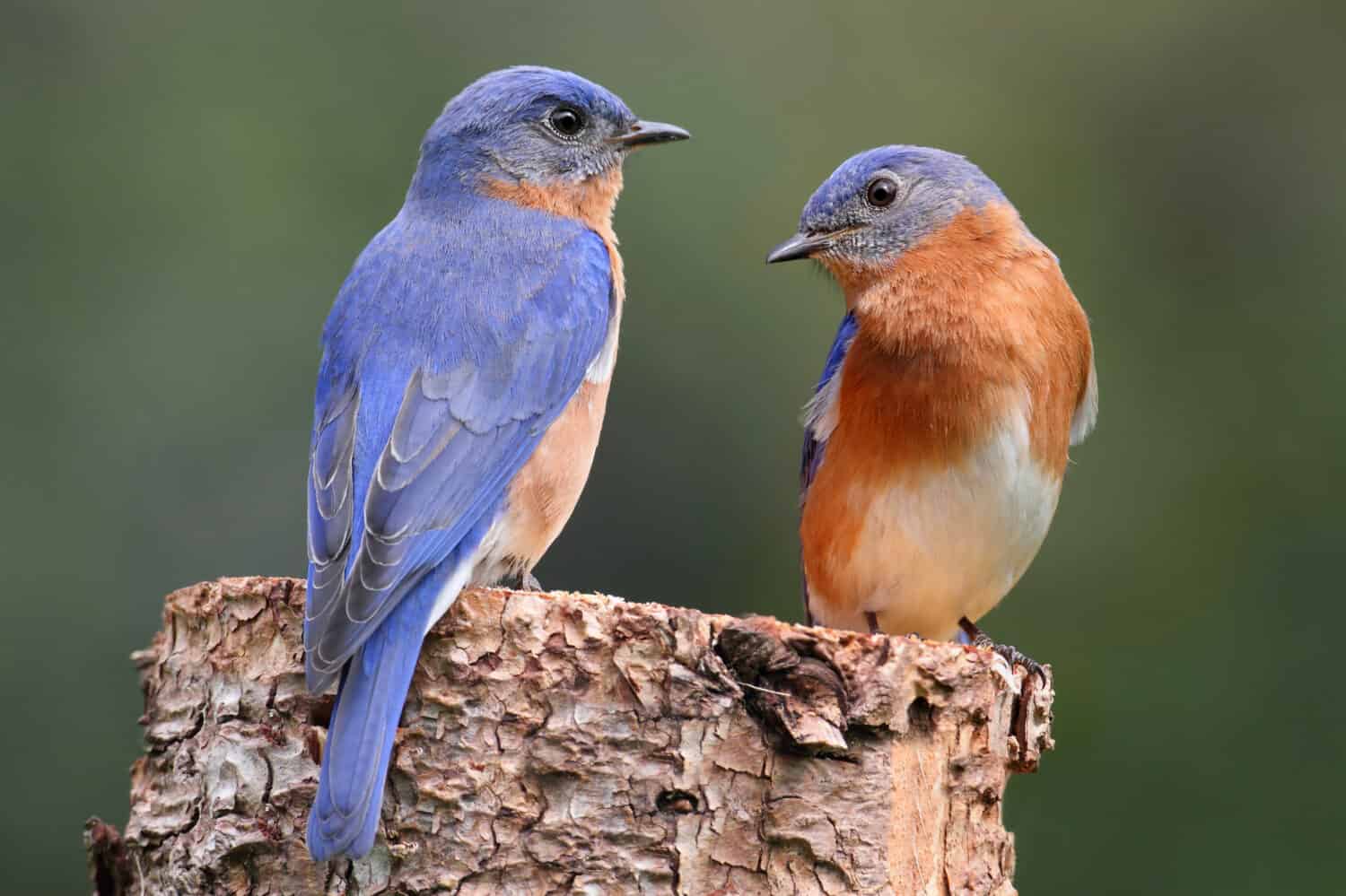
Eastern bluebirds love singing and flying around together before nesting.
Image: Steve Byland, Shutterstock
©Steve Byland/Shutterstock.com
Before pairing, eastern bluebirds love singing and flying around all day. After pairing, bluebirds become more secretive. They select their nesting cavity and gather grasses, delicate plant stems, and pine needles. The male will sing less; the female hides within the den of the nest cavity. Once the nest is finished, the bluebird pair will remain close for about 5 days or until the female lays her first egg.
7. Male Eastern Bluebirds Act as Escorts
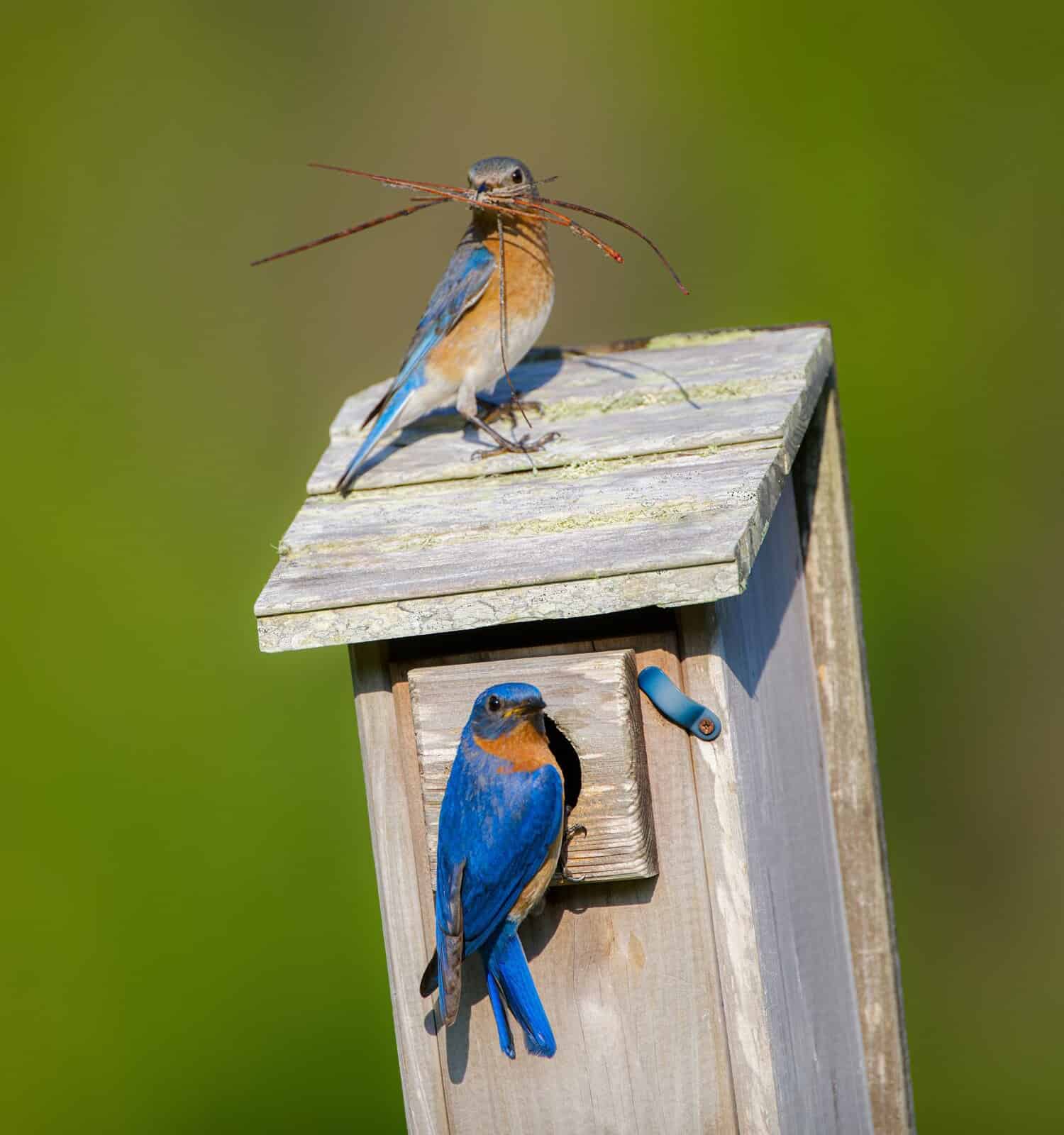
Male eastern bluebirds guard the nest during the nesting phase.
Image: Chase D’animulls, Shutterstock
©Chase D’animulls/Shutterstock.com
During the nesting phase, male eastern bluebirds become bodyguards for the female. They’ll pay extra attention anytime she departs or arrives at the nest. If a female wants to leave the nest, she’ll peek her head out of the box and wait for the male’s all-clear signal. Once she flies away, he’ll sing or stay in contact with her. Escorting helps protect the female eastern bluebird from predators. Attentive males can warn females of hawks circling overhead or nearby snakes sneaking toward the nest.
8. Eastern Bluebirds Sometimes Mate With Different Partners
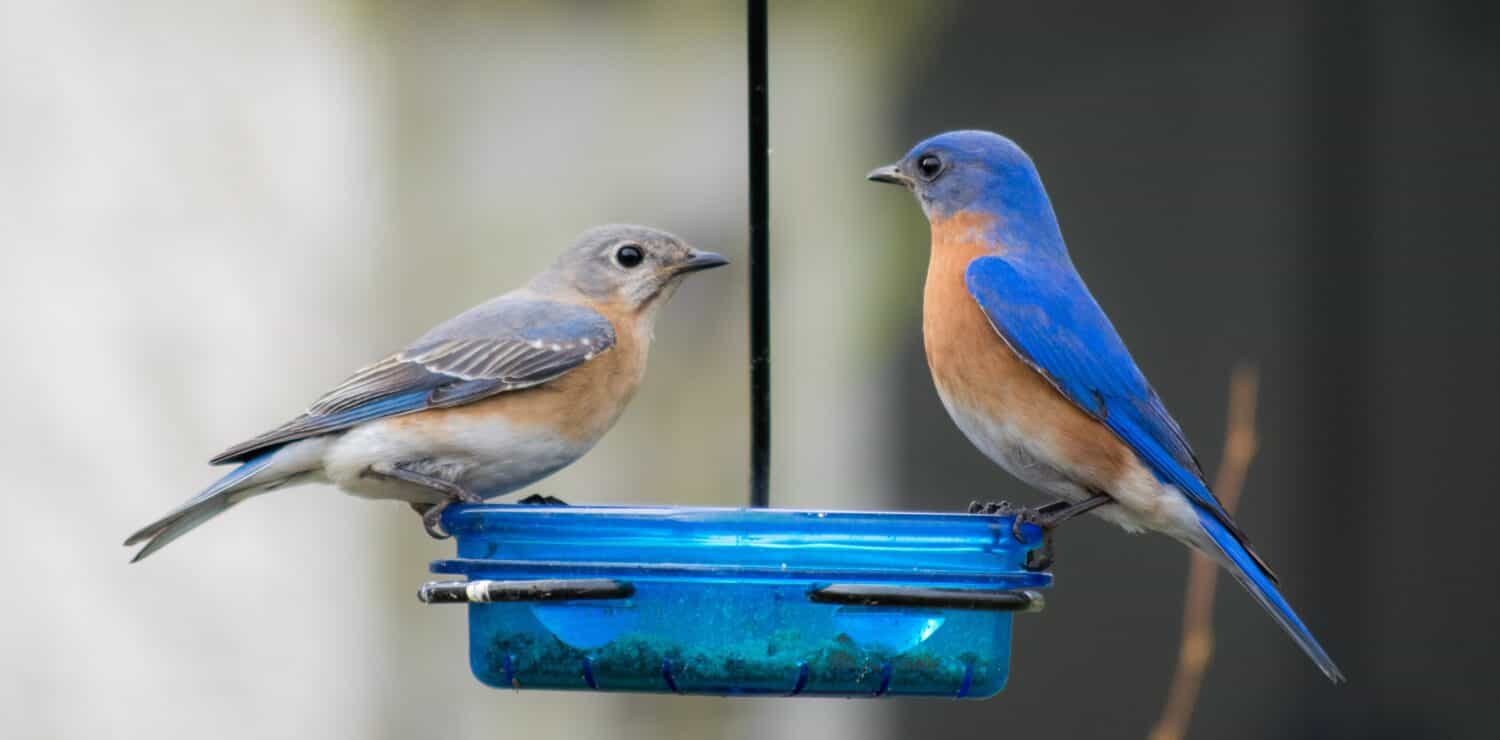
Eastern bluebirds are monogamous with flexibility.
Image: J Zdunczyk, Shutterstock
©J Zdunczyk/Shutterstock.com
Researchers thought 90% of birds were monogamous, but now we know many species aren’t. For instance, bluebirds have a lot of flexibility when choosing mates. Bluebirds have apparent monogamy, providing a genetic advantage to the species.
It means sometimes bluebirds mate outside their pairing. When this happens, the male’s genes have better chances of passing on to future generations. It also benefits the female because if one of her suitors is infertile, another can provide viable sperm for her eggs to develop.
9. There Are Floater Bluebirds
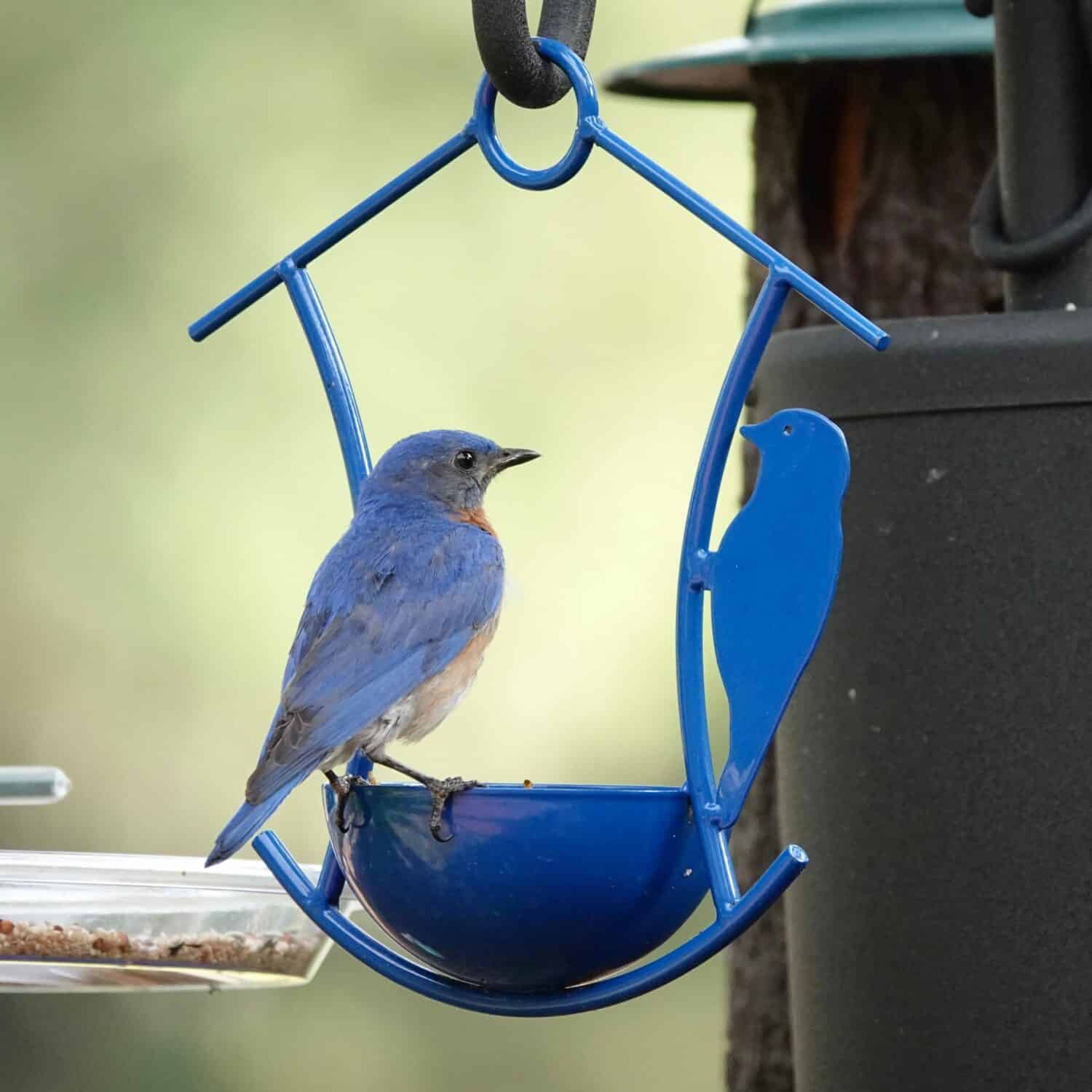
Sometimes eastern bluebirds are floaters without mates.
Image: Chris Klonowski, Shutterstock
©Chris Klonowski/Shutterstock.com
What’s next for incredible eastern bluebird facts? Sometimes adult bluebirds are floaters. A floater is an eastern bluebird who doesn’t have a mate or a nest site. If a floater female mates with the resident or floater male, she’ll search for a place to lay her egg, such as an unguarded nest.
When a floater bird tricks a resident bird into raising its young, it’s called klepto gamy. It means, sometimes the eggs under a brooding female aren’t hers. Other times, the eggs might be the females, but not the territory male’s offspring.
10. Mealworms Are Ice Cream to Bluebirds
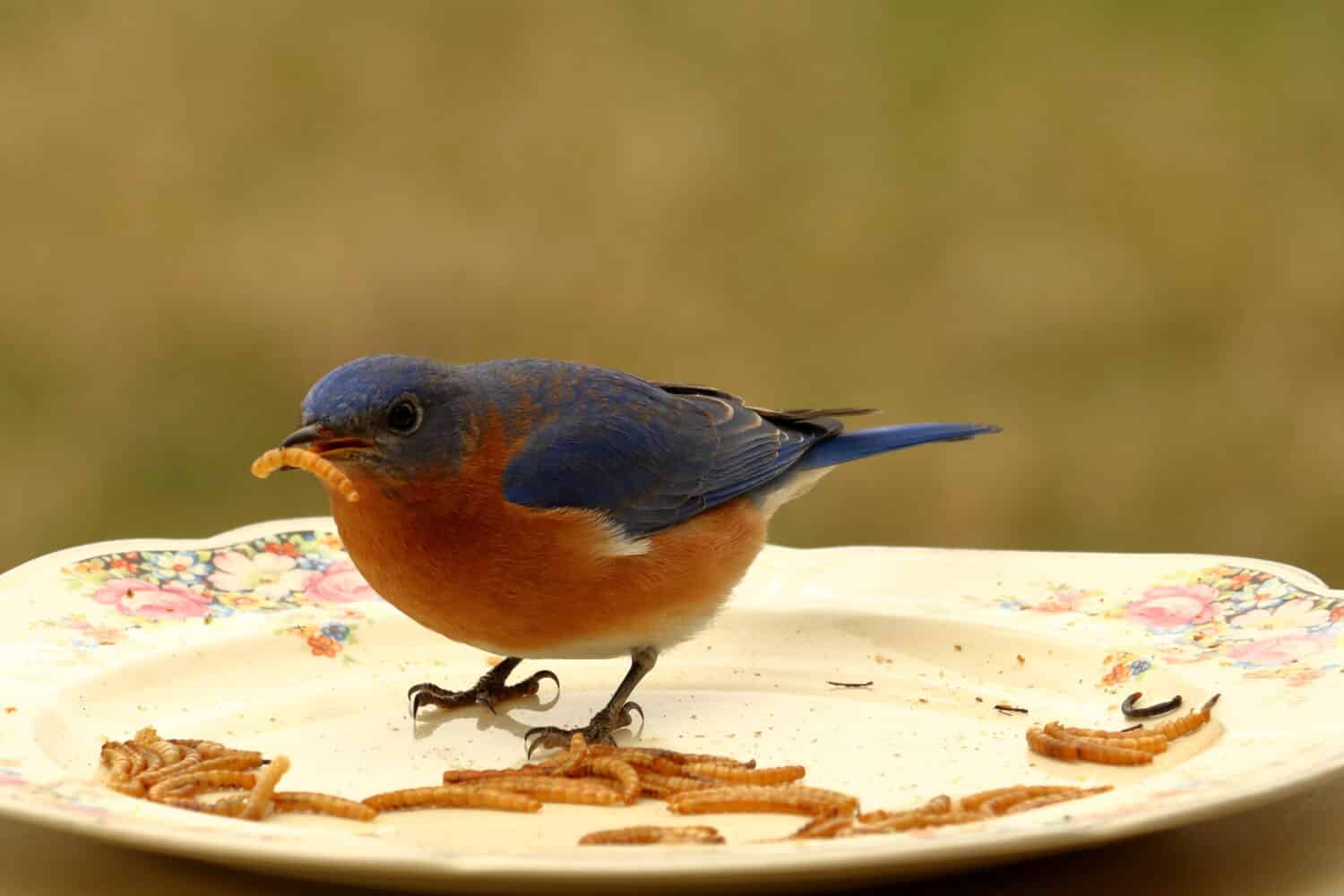
Eastern bluebirds always appreciate a mealworm treat!
Image: Melody Mellinger, Shutterstock
©Melody Mellinger/Shutterstock.com
Mealworms are the bluebird’s equivalent of ice cream. They love gobbling up these cream-colored creatures! Blue-birders put mealworms in the nest boxes during the late winter. During the cold, wet season, eastern bluebirds have difficulty finding insects. Giving them a handful of mealworms means you’ll supply them with all the nutrients they need. They’ll gobble up the offering and provide as many of the little worms to their hungry babies as they can.
Instead of dropping the mealworms into the nest box, it’s best to leave them to the bluebird’s discretion. Let the mealworms sit in the bird box, and the parents will decide when and how to feed them to their offspring.
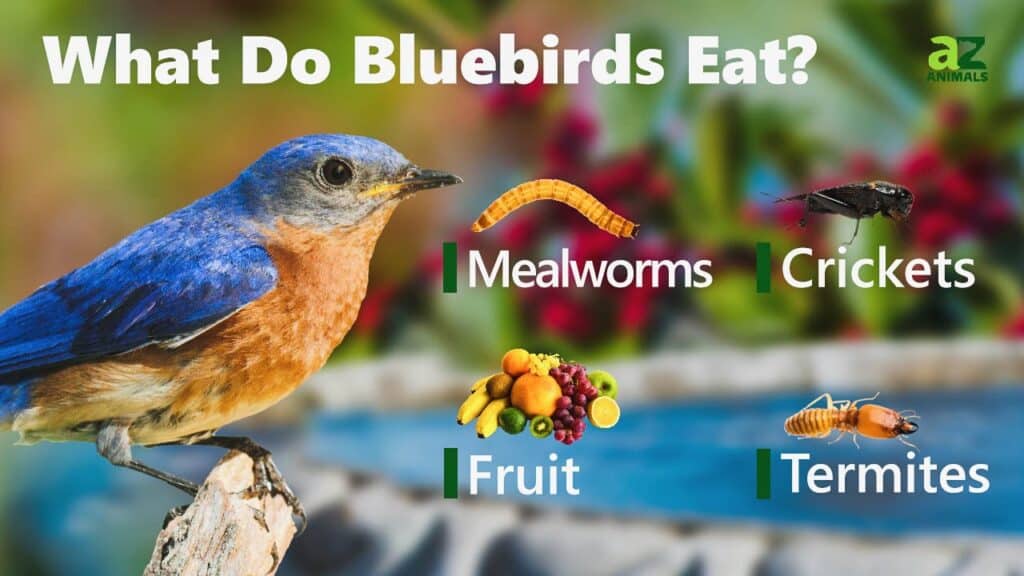
The photo featured at the top of this post is © Bonnie Taylor Barry/Shutterstock.com
Thank you for reading! Have some feedback for us? Contact the AZ Animals editorial team.






